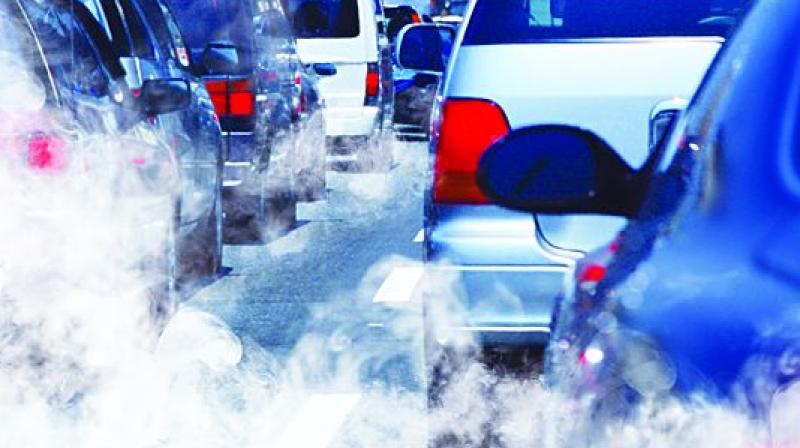BS-IV compliant cars use better technology
India has the second highest number of early deaths.

Hyderabad: Plugging loopholes in the government’s decision to switch over to BS-IV emission norms for vehicles in the country, the Supreme Court on Wednesday banned the sale and registration of BS-III (Bharat Stage-III) compliant vehicles from April 1.
In 2015, the Union road ministry had decided to introduce Bharat Stage-IV emission norms "all over the country in respect of vehicles manufactured on or after April 1, 2017." While the notification made it mandatory for automakers to switch to BS-IV norms from April 1, it did not say whether the sale of BS-III inventory would be allowed.
Auto makers argued that the notification had only banned production of BS-II compliant vehicles from April 2017, and sought more time to clear their stock, but the Supreme Court refused to entertain their plea.
According to the Society of Indian Automobile Manufacturers (SIAM), companies are holding unsold stock of around 8.24 lakh vehicles, which are not BS-IV compliant, including 96,000 commercial vehicles, over six lakh two-wheelers and around 40,000 three-wheelers.
The apex court has given primacy to the health of people rather than the commercial interests of automobile makers. According to the 2017 Global Burden of Disease report, India has the second highest number of early deaths due to particulate matter 2.5 in the world.
The court's order effectively plugs the loopholes in the government's notification, which would have allowed automakers to continue selling vehicles with poor emission standards.
BS-IV compliant vehicles use better technology to control harmful emissions of carbon monoxide (CO), hydrocarbons (HC), nitrogen oxide (NOx), and particulate matter (PM). BS-4 technology can halve these emissions compared to BS-3. “There will be close to 50 per cent decrease in pollution caused by vehicles under the BS-4,” said Dr Vijay Kumar Chennamchetty, senior interventional pulmonologist, Apollo Health City.
Higher CO and HC emissions can cause headaches, nausea and vomiting and disorientation, while NOx emissions, which are more prevalent in diesel engines, can cause nose and eye irritation and damage lung tissue in the long run.
“Particulate matter, which is more prevalent in a diesel engine can harm the respiratory tract and reduce lung function on long-term exposure,” said Dr Kumar.
According to him, hydrocarbons along with other pollutants can alter the DNA. If the number of mutations increases, it can cause cancer. Environment experts welcomed the judgement, calling it an acknowledgement of the public health crisis and a step in the right direction towards fighting air pollution.
However, the Siam, which represents the interests of vehicle manufacturers, called the judgement “frustrating.”
“As per the government notification, the sale of BS-3 vehicles was allowed after April 1. Now suddenly those BS-3 vehicles are banned. I find it quite frustrating that something like this happens," said SIAM president Vinod Dasari. According to an Angel Broking, the total value of the unsold BS-3 vehicles could be around Rs 12,000 crore.

